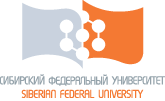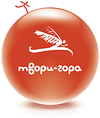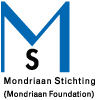
Симпозиумы прошлых лет: [ Pro&Contra 2000 ] [ Pro&Contra 2011 ]

2012 Theme: Heritage and Modernity We live in the world of new images, an elusive reality and unexplored opportunities. Each day we are introduced to new phenomena in hybrid forms of art: web theatre, cyber-space cinema, tactical and interactive media. Every day we provide new ways of seeing the world and actual interpretation of reality. New technologies make work with a cultural heritage much more modern and experiment as well as contemporary art practices. It enables a completely different way to present classical artwork of painting, architecture and other arts. It designs new structure and logic of the exhibition, makes the museum interactive and interdisciplinary with the help of new media, bring it to the virtual world, etc. Museum becomes not only as a place of preservation and exhibition of some artifact, but also a place of educational and socio-cultural platform, where the main priority is to create a qualitatively different environment for the audience. 
Venues |
Media days in SFUParticipants: a broad range of experts interested in the development of media culture, students and professors from SFU and other city colleges. NOVEMBER 8, 2012 (THURSDAY) 10.00 — 10.30 Registration 10.30 — 11.00 Welcome speeches on the symposium’s aims and goals LECTURES: “Art and museum technologies” 11.00 — 12.00 Maksim Rumyantsev, doctor of philosophy, head of the Department of Information Technologies in Creative and Cultural Industries, director of the Institute for the Humanities, Siberian Federal University (Russia) "Modern technologies of visualization in the humanities studies" The report presents the experience of the local and network programs creation with historical and cultural content (virtual museums, virtual tours, multimedia albums, electronic catalogs, etc.). Under consider is experience in using technologies of professional photograph of artistic works of art (painting, drawing, sculpture, DPI), 3d-panorama technology, giga pixel panoramic photography technology (creating high-resolution images), and the content and technological approaches to create interactive three-dimensional historical reconstructions based on 3dMax technology and 3d-engine Quest 3d. 12.15 — 13.15 Dimitri Pilikin, artist, curator and art critic. Vice Director of the Museum of Modern Art at the SPSU, Supervisor of grant competition «Science museum in the 21st century» by «Dynasty» Foundation. (Russia) "Contemporary artist and Science Museum (integration experience)" When we talk about Science Museum we imagine ultra modern scientific and technical museums or centers with an aim of science popularizing. The best of them represent a rich content of a high-tech hybrid equipment built contemporary environment, the creation of which is not possible without the designers and modern artists. The lecture focused on a Science Museum as a platform for the interpenetration of art and science, for cooperation between curators, scientists, artists and engineers. LUNCH BREAK 14.30 — 15.30 Dmitry Galkin, professor, media researcher, Tomsk State University (Russia) “An ideal object of artificial life and the future of robotechnics” An ideal object of artificial life (AL) can be presented on a line between computer simulation of organisms and ecosystems — real synthetic organisms and ecosystems, including those absolutely new, non-existent in nature. Between these apexes we can place digital replicas, robotized models and hybrid forms of AL (live tissue + technical devices). Artistic strategies differ from graphic generation of abstract paintings to creation of screen semblances of flora and fauna objects. Inevitability and invariance of evolution, the influence of cultural (technological) interventions upon the real ecosystems and the predictability of the outcome of AL manipulations, ethical and sociopolitical questions in creation of AL. 15.45 — 16.45 Olof van Winden, Art director of the Netherlands Media Art Institute, curator of the 7th Seoul International Media Art Biennale (the Netherlands). «Hyperconnectivity within Ubiquitous Human Media Space» This talk outlines new facilities that are arising in the hyperconnected Internet era within human media space. This allows new embodied interaction between humans, species and computation both socially and physically, with the aim of novel interactive communication and entertainment. Humans can develop new types of communication environments using all the sense, including touch, taste and smell, which can increase support for multi-person, multi-model interaction and remote presence. In this talk, we present an alternative ubiquitous computing environment and space based on an integrated design of real and virtual worlds. We discuss some different research prototype systems for interactive communication, culture, and play. NOVEMBER 9, 2012 (FRIDAY) LECTURES: “MEDIA COVERAGE: Media Culture and Interdisciplinary Practice” Art with its intuition and power of imagination that are not limited by either discourse or status or norm often becomes a catalyst of these processes. It is here at the factory of ideas and new images that the outlines of the future are traced. Exploring media communications as the major creative force inducing the world to change, Russian and foreign experts will present projects realizing interaction and interpenetration of various spheres of human activity, science, art and technology. Media culture research strategies in use, delineation of the source of media culture philosophical discourse. The world experience of research and education the Russian practices — what do they have in common, what are their differences. Interdisciplinary resources of media culture research — unified and diversified, media culture or media cultures. 11.00 — 12.00 Olga Lukyanova, Project coordinator MediaArtLab Centre for Art and Culture (Russia) “Art. Playing with reality” Contemporary artists work with the surrounding reality as a designer, complementing and discarding some part of it. By working with the various senses, memory, knowledge and imagination, they reflect and reassess the real, but on the other side they rebuild it, form a new vision, new ways of interaction. Art can expand our perception and give it some kind of volume by introducing new details and meanings, sometimes unexpected and not always appropriate at first glance. It works with the past, present and future at the same time. And its artistic position is an important tool for shaping reality, culture and people. 12.15 — 13.15 Olga Shishko, director of the MediaArtLab Centre for Art and Culture (Russia) “Inspiration in the past: a search for unused resources of cultural inheritance and contemporary media culture” It is evident that cinema is no longer what it once had been. Cinema is the mass psychology of the XX century. Nowadays it is getting more and more difficult to name any films that could claim to express the spirit of our time. This is partly due to their medium: how is cinema to be consumed, how to be transmitted? But I think that the habit of collective film viewing at a movie house will survive. This is largely a question of whether the cinema will succeed in creating an active and appreciative audience. There is nothing that would prevent any possible forms of visual images consumption, including the cinema. LUNCH BREAK 14.30 — 15.30 Arjon Dunnewind, director of the Impakt Festival and producer and curator of media art projects (The Netherlands) "Media art as a study of the urban environment — experience in creating festivals. MATRIX CITY" New media change the notion of public space. Public space is merging with virtual space where one influences and enhances the other: Augmented Reality, The Internet of Things, Ubiquitous Computing, etc. Urban culture is becoming media culture, more and more: jogging with your mp3 player, videos on mobile phones, digital graffiti, urban screens, video walls and architecture with integrated interactive technology. ‘Matrix City’ maps out the urban landscape as platform and source for inspiration for contemporary artists. The presentation sheds some light on the more political issues as the relationship between public space and private space and on the question who is in charge over public space. Also the city is presented as an immersive audiovisual environment, as a modal structure in which virtual and real systems merge. 15.45 — 16.45 Raivo Kelomees, head of the Media Art Laboratory at the Estonian Academy of Arts (Estonia) «Stories with Choices: Artist´s Multimedia Narratives» In this presentation, attention is focused on “artist´s multimedia”. The field can be defined by such terms as interactive narrative and cinema, documentary multimedia, interactive art, combinatorial art and films, database narrative etc. We will try to answer such questions as: “Does the opportunity to choose a narrative path give additional value to the artwork?” and “What are the differences between artistic or fictional interactive multimedia narrative and traditional narrative forms in literature or cinema?” Possibilities of breaking the time-line, interfering with content, and designing custom content give additional playful and open value to the narrative, but blur the authorship of the artwork. Sometimes, conceding the author’s responsibility is used by the artist to hide the author’s position. In other cases, the interactive structure of the narrative is rather a distraction and disturbance for the reader and viewer; the “story” might be much better in a non-interactive form. 18.00 — 19.30 PANEL DISCUSSION “MEDIA CULTURE AND INTERDISCIPLINARY PRACTICE: PROBLEMS OF TEACHING” Participants: Raivo Kelomees, Arjon Dunnewind, Olga Shishko, Olga Lukyanova, Olof van Winden, Maksim Rumyantsev, Natalia Kochorashvily Current tendencies of media education development: what is the use and how great is the demand for philosophical reflection and methodology. Media education in Russia and worldwide: the ways of perfecting professional media education, including educational technologies. Representatives of educational institutions will discuss the way in which the drastic social and cultural changes during the last 20 years have influenced the system of art education, with the focus on educational programmes in the media culture field. NOVEMBER 8, 2012 (THURSDAY) VIDEO SCREENING NOVEMBER 9, 2012 (FRIDAY) VIDEO SCREENING Curator: Lena Rumyantseva, MediaArtLab During these two days the students watch selections from one of the best international media art festivals — LOOP Fair (Spain). This year it was mainly devoted to the urban environment research — its theme City screen. In the non-stop format participants and guests of the symposium will be able to get acquainted with the latest video art festival. |
















